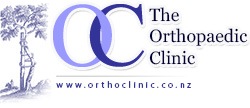Foot & Ankle Anatomy
How does the Foot & Ankle joint work?
Ankle Arthroscopy
Arthroscopy is a surgical procedure during which the internal structure of a joint is examined for diagnosis and treatment of problems inside the joint. Ankle Arthroscopy includes the diagnosis and treatment of ankle conditions. In arthroscopic examination, a small incision is made in the patient’s skin through which pencil sized instruments that have a small lens and lighting system (arthroscope) are passed.
For more information about Ankle Arthroscopy click on below tabs.
Ankle Fracture
Ankle injuries are amongst the most common injuries seen. An ankle fracture is a break in one or more bones that make up the ankle joint. Sometimes ligaments may also be damaged. Ankle fractures are most often caused by motor vehicle accidents, rolling or twisting of the ankle and by tripping or falling. People participating in sports such as basketball, rugby, soccer and skiing are at a high risk of developing ankle fractures.
For more information about Ankle Fracture click on below tabs.
Bunion Surgery
A bunion (hallux valgus) is a deformity of the foot that changes the shape of the foot due to angulation of the big toe towards the second toe. It is not usually caused by a growth of bone but often the angulation results in a swelling on the inside of the foot that rubs on shoes, causing inflammation and pain.
For more information about Bunion Surgery click on below tabs.
Achilles Tendon Rupture
The Achilles tendon is a strong fibrous cord present behind the ankle that connects the calf muscles to the heel bone. It is used when you walk, run and jump. When the Achilles tendon becomes thin, weak or if it is not used, it may be susceptible to injury or damage. Achilles tendon rupture occurs most often in middle-aged athletes participating in sports that involve running, pivoting and jumping. Recreational sports that may cause Achilles rupture include tennis, squash, netball and badminton.
For more information about Achilles Tendon Rupture click on below tabs.
Ankle Sprain
A sprain is stretching or tearing of ligaments, which connect adjacent bones in a joint and provide stability to the joint. An ankle sprain is a common injury and occurs when you fall or suddenly twist the ankle joint or when you land your foot in an awkward position after a jump. It most commonly occurs when you participate in sports or when you jump or run on a surface that is irregular.
For more information about Ankle Sprain click on below tabs.
Common Toe Deformities
Toes are the digits in your foot and are associated with walking, providing balance, weight-bearing and other activities. A variety of toe deformities occur in children’s feet.
For more information about Common Toe Deformities click on below tabs.
Plantar Fasciitis
Plantar fasciitis is a common problem that causes pain under the heel bone often first thing in the morning and with prolonged standing. It is often seen in middle-aged men and women.
Post Operative Instructions
Recovery After Foot and Ankle Surgery
After the surgery
- You will need to have a designated driver to take you home.
- Follow the written and verbal postoperative instructions that have been given to you.
- Plan on doing nothing more than resting and elevating your limb for the first two weeks after your surgery.
- Keep your cast or bandage dry and do not change it.
- Resume your normal medications, unless directed otherwise.
- Take your pain medications as directed.
- Do not smoke.
- You can eat and drink a normal diet but pain medication can cause constipation so a diet that is high in fibre may be helpful. Plenty of protein, fruit and vegetables will provide the nutrients that are best for healing.
- Call us, your normal doctor or the emergency department if you experience any “warning signs”.
Click on the topics below to find out more from the Orthopaedic connection website of American Academy of Orthopaedic Surgeons.
- Achilles tendon
- Adult (Acquired) Flatfoot
- Arthritis of the Foot and Ankle
- Ankle Fractures
- Athletic Shoes
- Rotura de tobillo (Broken Ankle)
- Broken Ankle
- Bunions
- Clubfoot
- Corns
- Diabetic foot
- Flexible flatfoot in children
- Foot Pain
- Fracture of the Talus
- Fractures of the Heel
- Hammer toe
- Heel Pain
- Ingrown Toenail
- Intoeing
- Orthotic Devices
- Paediatric Thigh Bone Fracture
- Plantar fasciitis
- Posterior Tibial Tendon Dysfunction
- Rheumatoid Arthritis of the Foot and Ankle
- Sesamoiditis
- Sprained Ankle
- Stiff Big Toe (Hallux rigidus)
- Stress Fractures of the Foot and Ankle
- Toe and Forefoot Fractures

